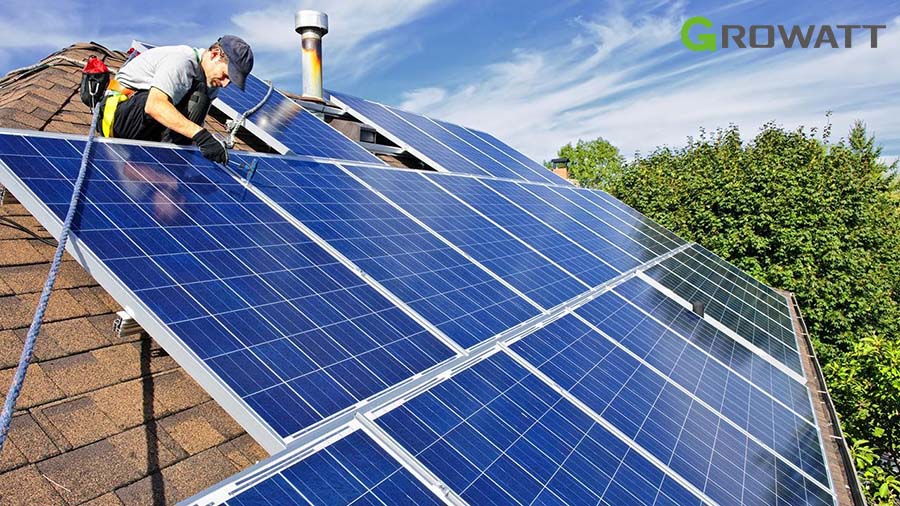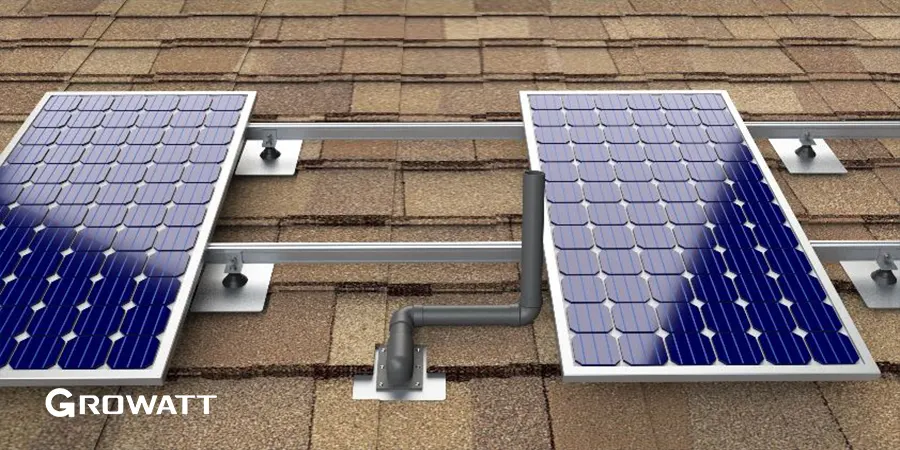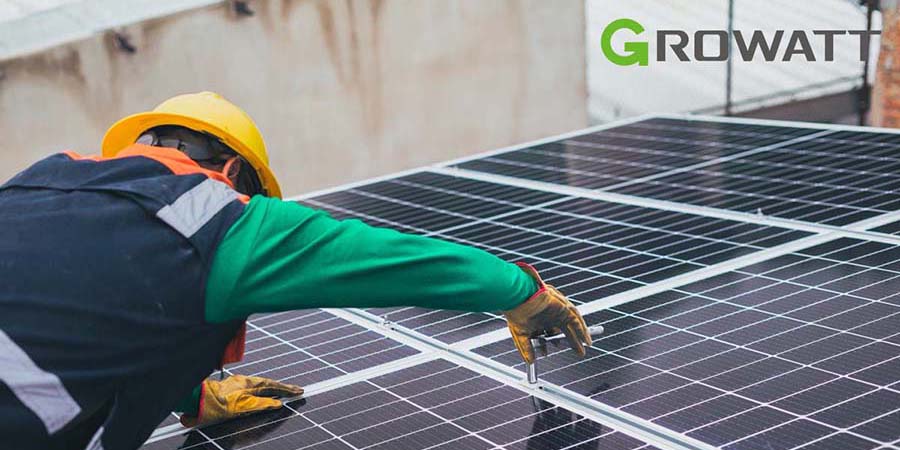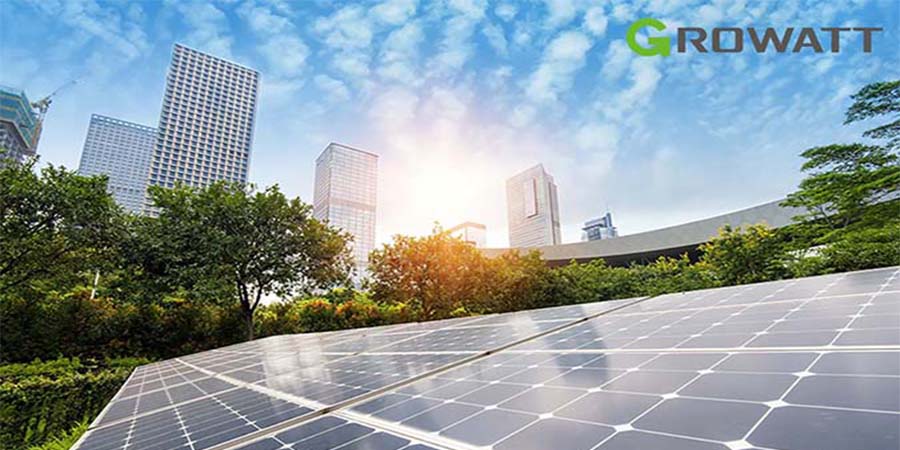Before Installing a Solar Inverter (DIY solar panel system) , there are a few crucial questions to consider:
- What are the finest solar panels for my home?
- How many solar panels will I require?
- What kind of battery do I require?
If you decide to do your solar installation, we recommend following the steps below to determine how to continue your project best.
DIY Solar Panel Installation
The first step is deciding where to put solar panels in your home. It would help to place your panels on a part of your roof that receives adequate sunshine throughout the year.
If higher buildings or trees surround your house and get a lot of shade, DIY solar panels may not be as appealing unless you also intend to buy a backup battery.
It would help if you also considered permits. Depending on how you set up and install your DIY solar panels, you may require a permit from the local building department or utility provider.
Solar panels permanently mounted to your roof may be considered a home improvement and require a building permit.
Your utility provider must also authorize grid-tied solar panels, which will offer a list of technical criteria to assure electrical safety.
Permitting is sometimes the most challenging phase in a DIY solar installation since you must fulfill technical criteria that are legally enforceable.
On the other hand, off-grid solar systems are often free from permits because they do not include house modifications or a link to the local grid.
second stage: Appropriate dimensions of the panels
Solar panels used in do-it-yourself installations are often smaller than those used by professional installers. PV modules included in DIY solar kits typically vary from 50 to 200 W, whereas more extensive modules used in rooftop installations frequently surpass 350 W.
You can quickly calculate your yearly power production in kilowatt-hours by multiplying the total solar panel wattage by 1.2. FOR EXAMPLE, a DIY solar system with eight 100 W modules would have 800 W of total power and generate around 960 kilowatt-hours (kWh) per year. For 20 cents per kWh, this system would save you around $192 per year over standard power costs.
Because DIY solar panels are typically ineligible for grid connection, you will want a battery backup solution. Add the total wattage of all items you wish to power with solar energy and look for a battery to deliver this wattage.
Lithium-ion batteries are preferred over traditional lead-acid batteries because they are more robust and safer.
third level: The place to install solar panels
Because DIY solar panels are typically ineligible for grid connection, you will want a battery backup solution.
Add the total wattage of all items you wish to power with solar energy and look for a battery to deliver this wattage. Lithium-ion batteries are preferred over traditional lead-acid batteries because they are more robust and safer.
Many DIY solar panels have an adjustable kickstand to help you prop up your panels. However, if you want to permanently install solar panels on your home, you’ll need an appropriate racking system or roof mount. The following are some things to think about:
If you have a standing seam metal roof, you may install the solar racking system directly with clamp mounts. It is not necessary to drill holes in your roof structure.
To put solar panels on other roofs, you’ll need penetrating mounts, which require drilling holes.
A ground-mount solar installation is another alternative if your home has enough spac A solar inverter is a device that transforms the direct current (DC) electricity generated by the PV modules in your solar panel into the alternating current (AC) power required to power your house.
There are two basic setup possibilities:e and you want to avoid the dangers of working on your roof at a height.
String inverters: All solar panels are joined into a DC circuit and connected to a central inverter for power conversion.
Microinverters: Each solar panel has a microinverter that transforms the output to alternating current (AC). A DC string circuit and a primary inverter are not required.
Obtaining Permission to Operate
Permitting is the biggest stumbling block for many do-it-yourself solar installations. As previously stated, if your solar panels are permanently affixed to your roof, you will require building permission and an interconnection permit if you want a grid-tied system. Most utility providers will not allow hookups unless your solar panels are professionally installed.
Care and upkeep
High-quality solar panels may endure for decades, and periodic maintenance is minimal. The most crucial need is that the surface of the solar panels be kept clean – dust and other particles can block some of the incoming sunlight, resulting in a reduction in power generation.
Solar panels may be washed, but avoid spraying them with cold water on hot summer days since the abrupt temperature shift may cause damage.
Instead, wipe your panels with a squeegee or soft brush to avoid surface damage and ensure a longer service life. Stiff brushes, roof rakes, and chemicals should be avoided.
Following Steps
Many valuable sites are available to assist you in learning more about solar panel technology, prices, and incentive schemes across the United States.
SEIA (Solar Energy Industries Association): The Solar Energy Industries Association (SEIA) releases thorough information on the solar sector in each state, and its quarterly Solar Market Insight Report breaks down typical costs and installation capacity by market segment.
National Renewable Energy Laboratory (NREL): The NREL continues researching solar power and other renewable energy sources, including technical and financial concerns.
State Incentives for Renewables and Efficiency Database (DSIRE): The DSIRE provides thorough information regarding renewable energy and energy efficiency incentive schemes in the United States. The database categorizes incentive programs, tax credits by state, and eligibility qualifications.
The Global Solar Atlas displays precise information on local solar radiation and the productivity of PV modules when you enter the coordinates of any area or click directly on the map.
The Benefits and Drawbacks of Doing Solar Yourself
Saving money on installation is one of the primary benefits of a do-it-yourself solar project. Solar Energy Industries Association (SEIA) research shows that homeowners may expect to pay roughly $3.27 per watt of solar capacity.
Based on this estimate, a professionally installed 6 kilowatt (kW) solar system would cost around $19,620. Skilled labor and overhead account for around 10% of the total cost of residential solar systems, so you might save money by installing panels yourself.
However, there are several disadvantages to DIY solar installation. Professional and do-it-yourself solar panels employ photovoltaic (PV) modules to gather solar power and convert it to energy, but each system performs differently. Professionally installed solar panels are often set up as grid-connected energy sources. However, most DIY solar panels run off-grid.
Typically, electric power providers will only allow you to connect your solar panels to the grid if a trained electrician installs them.
If you operate off-grid, you will miss out on energy savings through incentive schemes such as net metering. On the other hand, off-grid systems are portable and may be used anywhere, whereas grid-tied solar panels are restricted to a single location.
The table below summarizes some of the benefits and drawbacks of DIY solar panels to help you determine if it’s the correct option.
Setting up a solar power system requires the installation of a solar inverter. Several factors influence whether you should do your installation or hire a professional. Here are the advantages and disadvantages of both ways to help you make an informed decision:
- Complexity:
Solar power systems need electrical labor, which may be difficult and dangerous if done wrong. Inverters need accurate wiring and grid connections.
- Electrical dangers:
There are inherent electrical dangers with solar systems. Accidents, electric shock, or property damage are dangerous if you are inexperienced with electrical work.
- Warranty Issues:
To verify the warranty, many inverter manufacturers demand expert installation. DIY installation might invalidate your warranty, leaving you without coverage for costly repairs or replacements.
- Regulatory Compliance:
Depending on where you live, DIY installations may be required to follow local electrical rules and permission requirements. Noncompliance might result in legal concerns and complications when selling your house.
Professional Solar Inverter Installation:
1.Pros:
Professional installers have the expertise, training, and experience to deal with electricity safely, lowering the chance of accidents and electrical problems.
2.Warranty Assurance:
Professional installation usually ensures that your inverter’s warranty is not voided, giving you peace of mind and protection against unanticipated problems.
3.Code Compliance:
Because experienced installers know local building laws and regulations, your system will fulfill all legal requirements.
4.Efficiency:
Professionals can optimize your inverter’s positioning and wiring to optimize its efficiency, leading to increased energy output.
Cons:
- Cost: Professional installation incurs additional labor charges, which can account for a large amount of the total cost of your solar system.
- Scheduling: You may need to wait for an available installer, which may cause the installation procedure to be delayed.
- Less Control: With professional installation, you have less direct control over the installation’s timeline and performance.
Choosing Between DIY Installation and Professional Installation:
Your level of skill, familiarity with electrical work, budget, and local legislation will all influence your selection between DIY and professional installation.
Here are some things to think about:
DIY Installation:
- Consider this option if you have electrical expertise, are confident in your abilities, and have the appropriate tools and equipment. Before continuing, always verify local rules and warranty requirements.
- Professional Installation: This is the safest and most hassle-free option. It’s especially recommended if you lack electrical expertise, live in an area with stringent regulations, or want to ensure the full warranty coverage of your equipment.
Even if you want to conduct part of the job yourself, speaking with a professional installation is often a good idea. They may give direction, guarantee code compliance, and manage essential components of the installation, such as grid connection.
When dealing with solar power systems, remember that safety and code compliance are vital, and improper installations can result in costly repairs and significant safety issues.






